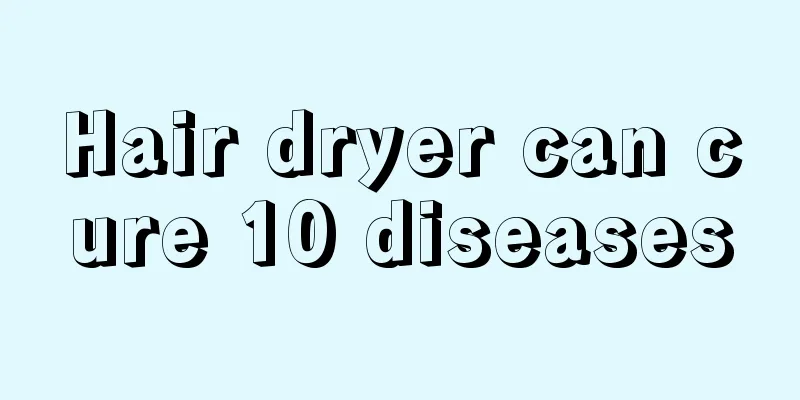How to treat acne

|
When it comes to the problem of acne, I believe many people are familiar with it. Because acne is also called pimples, it can be seen that the main group of people suffering from acne is concentrated in teenagers, and acne is red and swollen, which not only seriously affects the appearance of teenagers, but also affects their psychology and daily communication, causing them to have extreme inferiority complex. Therefore, many people want to know how to treat acne. So how to treat acne? In fact, there are many treatments for acne. Generally speaking, in addition to proper daily care, special attention should be paid to daily diet and living habits. Below I will give you a detailed introduction to the answer to the question of how to treat acne. Acne is a chronic inflammatory skin disease of the pilosebaceous unit that mainly occurs in adolescents and has a great psychological and social impact on them, but it often subsides or heals naturally after puberty. The clinical manifestations are characterized by polymorphic skin lesions such as acne, papules, pustules, nodules, etc. that are prone to occur on the face. Cause: The occurrence of acne is closely related to factors such as excessive sebum secretion, blockage of the sebaceous gland ducts of the hair follicles, bacterial infection and inflammatory response. After entering puberty, the level of androgens, especially testosterone, in the human body increases rapidly, promoting the development of sebaceous glands and producing a large amount of sebum. At the same time, abnormal keratinization of the sebaceous gland ducts of the hair follicles causes blockage of the ducts, hindering the excretion of sebum and forming keratin plugs, also known as micro-acne. Various microorganisms, especially Propionibacterium acnes, multiply in large numbers in the hair follicles. The lipase produced by Propionibacterium acnes breaks down sebum to produce free fatty acids, while also attracting inflammatory cells and mediators, ultimately inducing and aggravating the inflammatory response. Clinical manifestations: Skin lesions often occur on the face and upper chest and back. Non-inflammatory lesions of acne appear as open and closed comedones. The typical skin lesions of closed comedones (also known as whiteheads) are skin-colored papules about 1 mm in size with no obvious hair follicle openings. Open comedones (also known as blackheads) appear as dome-shaped papules with significantly dilated follicular openings. Acne will further develop into various inflammatory skin lesions, manifesting as inflammatory papules, pustules, nodules and cysts. Inflammatory papules are red, with a diameter ranging from 1 to 5 mm; pustules are uniform in size and filled with white pus; nodules are larger than 5 mm in diameter, feel hard and painful to the touch; cysts are located deeper and are filled with a mixture of pus and blood. These lesions may also fuse to form large inflammatory plaques and sinus tracts. After the inflammatory skin lesions subside, pigmentation, persistent erythema, and depressed or hypertrophic scars are often left behind. Clinically, acne is divided into 3 or 4 grades according to the nature and severity of acne lesions: Grade 1 (mild): only comedones; Grade 2 (moderate): in addition to comedones, there are also some inflammatory papules; Grade 3 (moderate): in addition to comedones, there are also more inflammatory papules or pustules; Grade 4 (severe): in addition to comedones, inflammatory papules and pustules, there are also nodules, cysts or scars. diagnosis Based on the characteristics of onset in adolescents, distribution of skin lesions on the face, chest and back, and the main manifestations of polymorphic skin lesions such as whiteheads, blackheads, inflammatory papules, pustules, etc., it is easy to diagnose clinically and usually no other examinations are required. Sometimes it is necessary to differentiate it from rosacea, disseminated miliary lupus faciis, sebaceous adenoma, etc. How to treat acne treat 1. Daily care: Wash your face with warm water once or twice a day to clean your skin. Avoid squeezing or scratching skin lesions with your hands. Avoid using oily and powdery cosmetics and ointments and creams containing glucocorticoids. 2. Common methods for treating acne: (1) Topical medications: retinoids (retinoic acid cream, adapalene gel, tazarotene gel), benzoyl peroxide, antibiotics (clindamycin, erythromycin, chloramphenicol, etc.), azelaic acid, sulfur lotion, etc. (2) The first choice of oral antibiotics is tetracycline (minocycline, doxycycline, etc.), followed by macrolides (erythromycin). Avoid antibiotics commonly used to treat systemic infections such as levofloxacin. The course of antibiotics is usually 6 to 12 weeks. (3) Oral isotretinoin For severe acne, oral isotretinoin is the standard treatment and currently the most effective method for treating acne. The treatment course aims to achieve a minimum cumulative dose of 60 mg/kg. (4) Anti-androgen therapy, such as the oral contraceptive cyproterone acetate combined tablets (trade name Diane-35), is suitable for female patients with moderate to severe acne accompanied by symptoms of excessive androgen levels (such as hirsutism, seborrhea, etc.) or polycystic ovary syndrome. Female patients with delayed-onset acne and acne that is significantly aggravated before menstruation may also consider using oral contraceptives. (5) Oral glucocorticoids are mainly used for fulminant or aggregated acne, following the principle of short-term, low-dose, and combined with other methods. (6) For patients who cannot tolerate or are unwilling to receive drug treatment, physical therapy such as photodynamic therapy (PDT), fruit acid therapy, laser therapy, etc. can also be considered. 3. Graded treatment of acne: (1) Grade 1 is generally treated topically, with topical retinoic acid preparations being the first choice. (2) Level 2: Combined use of topical retinoids and benzoyl peroxide or antibiotics, and oral antibiotics if necessary. (3) Grade 3 often requires combined treatment, with oral antibiotics combined with topical benzoyl peroxide and/or retinoic acid drugs as the first choice. Antiandrogen therapy may also be considered for female patients where indicated. (4) Grade 4 oral isotretinoin is the most effective treatment and can be used as first-line treatment. For patients with more inflammatory papules and pustules, systemic antibiotics combined with topical benzoyl peroxide can be used first, and then oral isotretinoin can be used for sequential treatment after the skin lesions have improved significantly. 4. Maintenance treatment of acne: Regardless of the treatment method used, maintenance treatment should be continued after the skin lesions have significantly subsided. Topical retinoic acid drugs are the first choice, and maintenance treatment should be continued for 6 to 12 months. Benzoyl peroxide can be used in combination if necessary. After reading the detailed answer to the question of how to treat acne above, I believe many patients and their families already know how to treat acne. Acne is generally treated with medication. In addition, some topical medications are selected and applied to the acne-affected areas to achieve the effect of anti-inflammatory and swelling reduction. Daily care cannot be ignored. Be careful not to squeeze acne with your hands, and keep your face clean, etc., to prevent acne from continuing to grow, so everyone should pay attention. |
<<: How to enhance skin immunity
Recommend
Causes of abo hemolysis disease
Many people want to fully understand the cause of...
Exercise conditioning methods for fibroids
Many patients with fibroids want to know if there...
Personality traits of people with high IQ
However, there are many people around us who have...
What are the early symptoms of bone cancer?
What are the early symptoms of bone cancer? Bones...
How to prevent lung cancer? These four points need attention
Once a tumor appears in the lungs, it will affect...
How to make pumpkin steamed rice
Pumpkin steamed rice in a pot is a particularly p...
Why do my buttocks and thighs sweat?
I believe that many people often encounter some p...
Stir-fried soybeans make soy milk more fragrant
Soy milk is a drink that is deeply loved by peopl...
Does sorghum rice help lose weight?
Sorghum rice is a kind of food and a coarse grain...
Differential diagnosis of early nasopharyngeal carcinoma
Differential diagnosis of early nasopharyngeal ca...
Symptoms of prostate cancer bone metastasis
Prostate cancer is a fatal injury to men. It is n...
Melanoma may be caused by ultraviolet radiation
Melanoma may be caused by ultraviolet radiation. ...
What are spinal diseases
The spine, also known as the vertebrae, is locate...
Why does my left chest hurt when I breathe
Breathing is one of our most basic physiological ...
Introduction to currently effective preventive measures for colorectal cancer
Since the incidence of colorectal cancer is very ...









